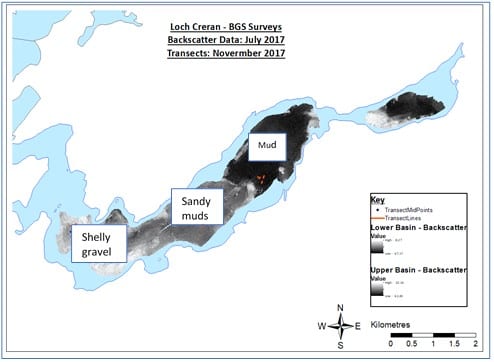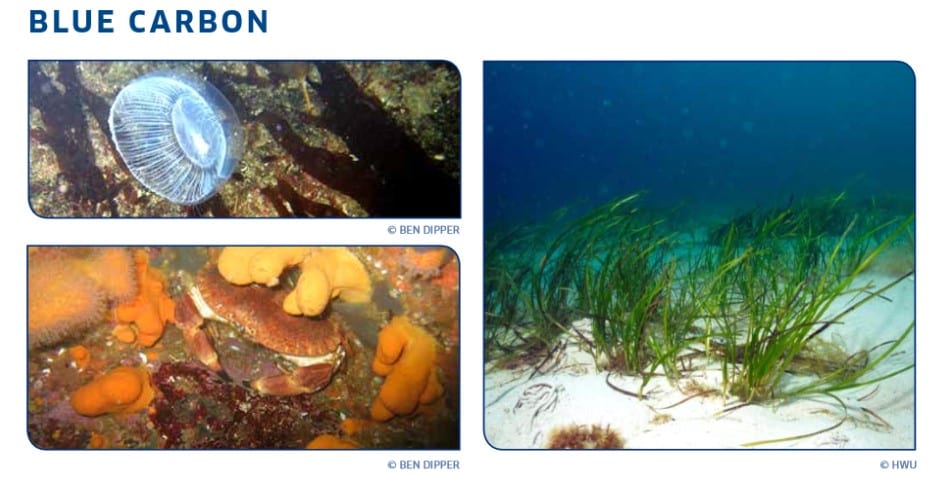Marine
Researching Blue Carbon – meet Corallie Hunt
November 2, 2018 by Marine Scotland Communications 1 Comment | Category Blue Carbon, Collaborations, Marine Directorate general, Marine Directorate Science, Year of the Young Person
A new Scottish Government funded research programme into Blue Carbon began earlier this year as part of a commitment in the 2017-2018 Programme for Government. The current focus revolves around measuring the ability of various habitats to sequester carbon, understanding how it is stored for the long term, and building an evidence base on the effects that human activities may have on these process. To support the programme, the Scottish Government has sponsored a number of PhD students and Marine Scotland has just established the Scottish Blue Carbon Forum (SBCF), which will be made up of the students and supervisors of the studies, as well as external stakeholders and Scottish Government climate change colleagues.
In this series of blogs, we will be introducing you to each of the students and letting them tell you more about their work.
First up, Corallie Hunt.
A National Inventory of Sedimentary Blue Carbon on the Scottish Continental Shelf
The marine environment plays a key role in the global carbon cycle.
The oceans contain approximately 50 times more carbon than the atmosphere and are the largest carbon sink on Earth.
Recent studies have highlighted so-called ‘blue carbon’ ecosystems, coastal, vegetated habitats, as having a valuable role in sequestration and storage of atmospheric CO2.
Additionally, marine sediments are considered as long-term stores of carbon. Although, sediments do not actively draw-down CO2 from the atmosphere in the same way, if undisturbed they can store carbon-rich matter that has settled out of the water column for millennia.
A recent SNH-commissioned report brought to life the wealth of Scotland’s blue carbon resources in coastal habitats and offshore waters. It recommended that further research be undertaken to improve our understanding of the role of sedimentary carbon within the global carbon cycle.
My PhD research focuses on the sedimentary carbon store on the Scottish Continental Shelf (SCS). Covering an estimated area of 470,000 km2 the SCS has a very diverse seabed, which has been heavily influenced by past glacial conditions.

Acoustic backscatter data using a multi-beam echosounder from Loch Creran highlighting the variability in sediment type
Spatial mapping will play an integral component to understanding where organic carbon is likely to be found and to create a first-order estimation of the carbon stock.
I am currently focussing on Loch Creran, a sea-loch, or fjord, on the west coast of Scotland (Figure 1, above). Fjords are natural sinks of marine and terrestrial carbon due to their proximity to land and geomorphology, trapping settling sediments in over-deepened glacial basins.
A recent acoustic survey shows the surficial sediments to be heterogeneous which implies that not all sediments in Loch Creran are equal.
I am developing a methodology using acoustic backscatter (‘sound’), sea-bed imagery (‘sight’) and optimised grab sampling (‘touch’) to determine the effectiveness of using acoustics to predict carbon storage within surficial sediments.
Due to the relationship between sediment-type and sound-reflection, multi-beam acoustic systems are used to characterise the seabed. Carbon storage is related to sediment grain size; fine-grained sediments generally have higher contents of organic matter. Using these relationships, I am trying to determine whether a correlation between acoustic data and organic carbon content exists.
The outcomes of this project should improve our ability to predict and spatially map the surface sedimentary carbon store in Loch Creran, which may be used to inform carbon vulnerability studies and marine management planning. If successful, this method could be applied to improving spatial mapping in similar environments or potentially upscaled to cover larger areas, for instance on the Continental Shelf.
Corallie Hunt
Further Information
Tags: blue carbon, organic carbon, research



Interesting study but looks and sounds very technical